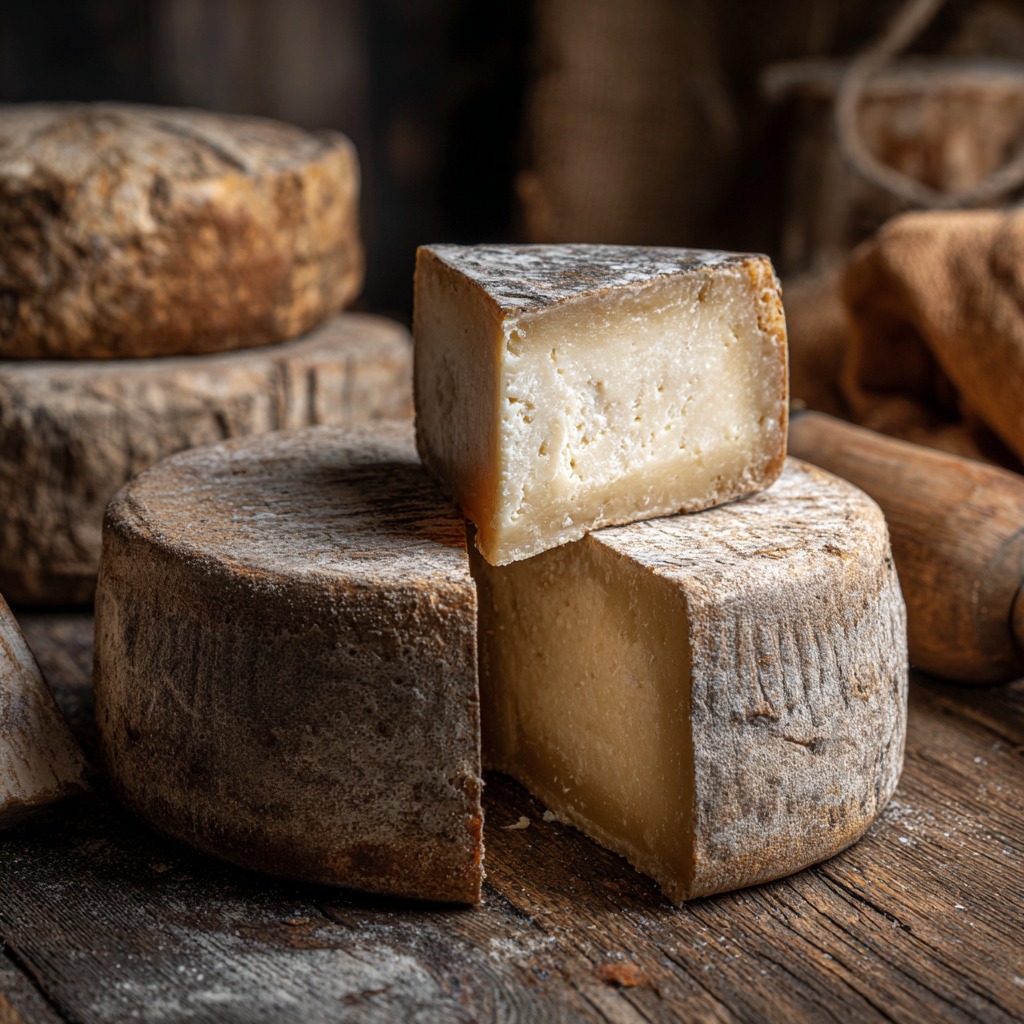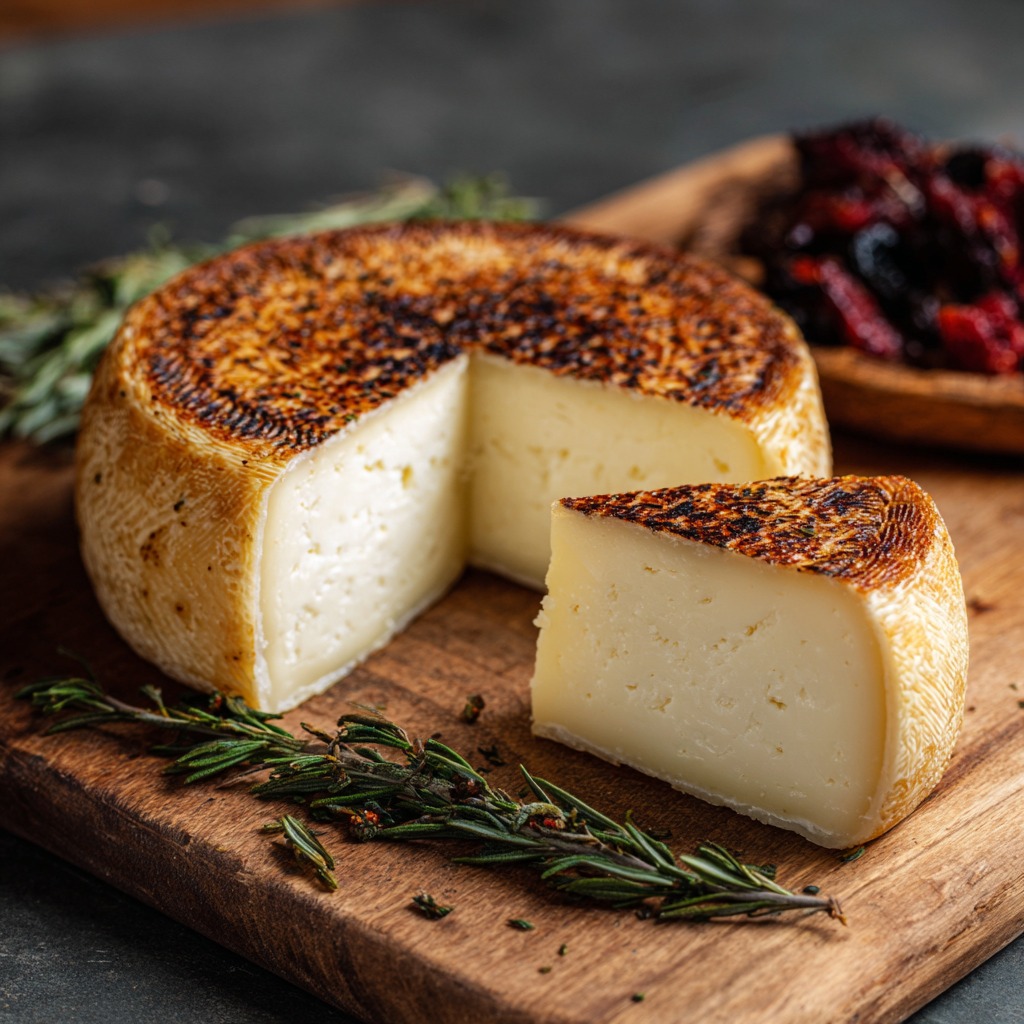Tomme Cheese Recipe is one of those delightful cheeses that has been enjoyed for centuries. Its unique flavors and smooth texture make it a beloved choice for cheese connoisseurs. If you’ve ever wondered how to make this rich and creamy cheese at home or are just looking for ways to enjoy it, you’ve come to the right place! In this article, we’ll take you step-by-step through a tomme cheese recipe, explore its unique characteristics, and provide tips for pairing it with other foods and wines. Whether you’re a seasoned cheese maker or just a beginner, you’ll find this guide to be easy to follow and packed with useful information.

- What is Tomme Cheese?
- What Makes Tomme Cheese Special?
- How to Make Tomme Cheese at Home
- Tomme Cheese Pairings: What to Eat with Tomme Cheese
- Tomme Cheese vs Other Cheeses: How Does It Compare?
- Can You Buy Tomme Cheese?
- Tomme Cheese for Special Diets
- FAQs about Tomme Cheese
- Final Thoughts on Tomme Cheese Recipe
- Tomme Cheese with Herbs and Spices
What is Tomme Cheese?
Tomme cheese is a semi-soft, cow’s milk cheese that is traditionally made in the French Alps. It is typically produced using the leftover whey after making other cheeses. Tomme cheese is known for its earthy and slightly nutty flavor, which becomes more pronounced as it ages. It has a firm but creamy texture, making it an ideal addition to many dishes.
Tomme Cheese Variations
There are various types of Tomme cheese, each originating from different regions of France and beyond. The most well-known variations include:
- Tomme de Savoie – A French classic with a mild and slightly tangy flavor.
- Tomme de Brebis – Made from sheep’s milk, this version has a richer flavor.
- Tomme de Chèvre – Made from goat’s milk, this type offers a sharper taste.
Each variation of Tomme cheese has its unique flavor and texture, influenced by the type of milk used, the aging process, and the specific region of production.
What Makes Tomme Cheese Special?
Tomme cheese stands out due to its unique production process and diverse range of flavors, depending on its milk base. Here are some key factors that contribute to the cheese’s charm:

The History of Tomme Cheese
Tomme cheese has a long and rich history dating back to the Middle Ages. It was originally made by farmers as a way to preserve excess milk during the summer months. In its early form, it was typically produced in small batches, and farmers would age the cheese in caves or cellars to preserve it throughout the year.
Texture and Flavor Profile
The texture of Tomme cheese is semi-soft, with a smooth but slightly crumbly feel when aged. The cheese’s flavor is mild when young, with hints of grass and cream. As it ages, Tomme cheese develops a more pronounced, nutty, and earthy flavor that can stand out in various culinary applications.
How to Make Tomme Cheese at Home
Making tomme cheese at home can be a rewarding experience for cheese lovers. It’s a fun project that allows you to appreciate the intricate art of cheese making. The process involves some patience, but with the right instructions, you can make delicious Tomme cheese right in your kitchen.
Ingredients You Need for Tomme Cheese
Here’s what you’ll need to make a simple tomme cheese recipe:
- Milk: You can use cow’s milk, sheep’s milk, or goat’s milk.
- Starter Cultures: These are bacterial cultures that help turn the milk into curd.
- Rennet: A natural enzyme that helps coagulate the milk into curds.
- Salt: For flavor and preservation.
Step-by-Step Tomme Cheese Recipe
Follow these steps to make your own tomme cheese at home:
- Preparing the Milk
Heat the milk to around 85°F (29°C). This temperature is ideal for the starter cultures to begin working. - Adding Starter Cultures and Rennet
Add the starter cultures to the milk and allow them to hydrate. After that, add the rennet to coagulate the milk and form curds. Stir gently and wait for about an hour. - Cutting the Curd
Once the curd has formed, cut it into small cubes (about 1/4 inch in size). This helps the curd release its whey. - Cooking and Stirring
Gradually heat the curd to 130°F (55°C), stirring occasionally. This helps the curd firm up. Maintain this temperature for 30 minutes. - Draining and Pressing
After the curds have cooked, drain the whey from the curd and press the curds into a cheese mold. - Salting the Cheese
After pressing, salt the cheese to add flavor and preserve it. You can either rub salt directly onto the cheese or dissolve it in brine. - Aging Tomme Cheese
Allow the cheese to age in a cool, humid environment for at least two months. The longer it ages, the firmer and more flavorful it becomes.
Common Mistakes to Avoid When Making Tomme Cheese
- Overheating the Milk: This can result in a grainy texture.
- Improper Curd Cutting: Cutting the curds too small can make the cheese too dry.
- Not Using the Right Salt: Using the wrong kind of salt can affect both flavor and preservation.
Tomme Cheese Pairings: What to Eat with Tomme Cheese
Tomme cheese is incredibly versatile and pairs well with a variety of foods and beverages. Here are some great ideas for pairing Tomme cheese:
Best Wines to Pair with Tomme Cheese
- Red Wines: Pinot Noir, Merlot, and Cabernet Franc all pair beautifully with Tomme.
- White Wines: Chardonnay and Sauvignon Blanc are also great choices.
Ideal Accompaniments for Tomme Cheese
- Fruits: Grapes, apples, and pears balance the cheese’s richness.
- Nuts: Almonds, walnuts, and hazelnuts add crunch.
- Bread: A hearty loaf of bread or a baguette complements the cheese.
How to Incorporate Tomme Cheese in Recipes
- Tomme Cheese Salad: Add cubes of Tomme to a fresh salad for added richness.
- Tomme Cheese Sandwiches: Pair Tomme with crusty bread and mustard for a simple yet delicious sandwich.
- Tomme Cheese Fondue: Melt Tomme cheese and enjoy it as a fondue with veggies and bread.

Tomme Cheese vs Other Cheeses: How Does It Compare?
Tomme Cheese vs Brie
- Tomme is firmer and has a more complex, earthy flavor, while Brie is soft and creamy with a milder taste.
Tomme Cheese vs Gouda
- Tomme is less creamy than Gouda, which is sweeter and firmer.
Tomme Cheese vs Cheddar
- Tomme offers a softer, nutty profile compared to the sharp, tangy flavor of Cheddar.
Can You Buy Tomme Cheese?
If making Tomme cheese at home isn’t for you, there are plenty of places where you can buy this delicious cheese.
Where to Buy Tomme Cheese
- Local Cheese Shops: Check your local cheese shop for artisanal Tomme.
- Online Retailers: Websites like Murray’s Cheese or iGourmet offer various Tomme options.
How to Identify Good Quality Tomme Cheese
- Appearance: Tomme should have a smooth, even rind and a creamy, slightly crumbly interior.
- Smell: The scent should be earthy but not overly pungent.

Tomme Cheese for Special Diets
Is Tomme Cheese Suitable for Vegetarians?
Tomme cheese can be made vegetarian-friendly by using vegetable-based rennet.
Lactose-Free Tomme Cheese
Although Tomme cheese is typically made with milk, there are lactose-free options available for those with lactose intolerance.
FAQs about Tomme Cheese
- What is the difference between Tomme cheese and other French cheeses?
- Tomme cheese is firmer and more earthy compared to other cheeses like Brie and Camembert.
- Can Tomme cheese be used in cooking?
- Yes, Tomme cheese is perfect for melting and adding to dishes like fondue, soups, and baked goods.
- How long does Tomme cheese last?
- Tomme cheese can last for up to two months if stored properly in the fridge.
Final Thoughts on Tomme Cheese Recipe
Making tomme cheese at home can be an enjoyable and fulfilling experience. Not only will you appreciate the cheese-making process, but you’ll also get to enjoy a rich, earthy cheese that can elevate any dish. Whether you’re serving it as part of a charcuterie board or using it in your favorite recipes, Tomme cheese is a versatile ingredient worth exploring.
So, why not give it a try? Start with this tomme cheese recipe and discover how this simple cheese can bring a touch of France into your kitchen!

Herb-Infused Tomme Cheese Recipe
Equipment
- Large pot for heating milk
- Cheesecloth or fine mesh strainer
- Cheese mold
- Knife for cutting curds
- Large spoon for stirring
- Cheese press
- Thermometer to monitor milk temperature
- Bowl for mixing herbs and spices
- Aging rack or cheese cave for aging the cheese
Ingredients
- 1 gallon of cow’s milk or goat’s or sheep’s milk for variation
- 1/4 teaspoon of mesophilic starter culture
- 1/4 teaspoon of liquid rennet
- 1 1/2 tablespoons of non-iodized salt
- Fresh herbs thyme, rosemary, oregano, or your choice
- 1 teaspoon of crushed black pepper
- 1/2 teaspoon of garlic powder or 1-2 cloves finely minced garlic
- 1/4 teaspoon of red pepper flakes optional for a spicy kick
Instructions
- Heat the Milk: In a large pot, heat the milk to 85°F (29°C). Stir occasionally to avoid burning.
- Add the Starter Culture: Sprinkle the mesophilic starter culture over the milk. Let it rehydrate for a few minutes before stirring it in thoroughly. Allow the milk to ripen for 30-60 minutes at this temperature.
- Add Rennet: Add the rennet to the milk (dissolve it in 1/4 cup of cool, non-chlorinated water first). Stir gently for about 1 minute, then cover and let it sit for 1 hour, allowing the curd to form.
- Cut the Curd: Once the curd is set, use a knife to cut it into small 1/4-inch cubes. Let the curds rest for 5 minutes to firm up.
- Cook and Stir the Curd: Slowly heat the curds to 130°F (55°C), stirring gently. Maintain this temperature for about 30 minutes, stirring occasionally to prevent the curds from sticking together.
- Drain the Whey: Carefully drain the whey from the curds by pouring them into a colander lined with cheesecloth. Allow the curds to drain for about 10 minutes.
- Mix in Herbs and Spices: In a separate bowl, combine your choice of fresh herbs, black pepper, garlic powder, and red pepper flakes. Sprinkle this mixture over the curds and gently mix it in.
- Press the Cheese: Transfer the curds into a cheese mold, pressing them lightly to remove excess whey. Apply more pressure gradually over the next several hours until the cheese is firm.
- Salt the Cheese: After pressing, rub salt over the surface of the cheese, or alternatively, place it in a brine solution for about 24 hours.
- Aging: Let the cheese age in a cool, humid environment (50°F/10°C with about 80% humidity) for 2-3 months. The cheese will develop deeper flavors the longer it ages.
Notes
- Herb Variations: Feel free to experiment with different herbs based on your taste preferences. Basil, thyme, or even lavender can be added for a unique twist.
- Aging Time: The longer the cheese ages, the more intense the flavors will be. You can age it for up to 6 months for a sharper taste.
- Storage: After aging, store the cheese in wax paper or parchment paper, and then wrap it in plastic wrap or a cheese paper. Keep it in the fridge for up to 6 months.

Tomme Cheese with Herbs and Spices
Adding herbs and spices to your Tomme cheese is a wonderful way to personalize the flavor. It can be a creative way to experiment with different tastes, perfect for pairing with a variety of dishes. Here’s a simple way to infuse herbs into your homemade Tomme cheese:
Herb and Spice Ingredients:
- Fresh thyme, rosemary, or oregano (depending on your flavor preference)
- Crushed black pepper
- Garlic powder or finely minced garlic
- Red pepper flakes (for a hint of heat)
How to Incorporate Herbs and Spices:
- Prepare the Curds: Follow the steps in the basic Tomme cheese recipe, but before pressing the curds, mix in the herbs and spices of your choice. Start with a teaspoon of each, depending on how strong you want the flavors to be.
- Pressing: Once the curds and spices are mixed, proceed to press the cheese as per the usual instructions.
- Aging: Allow the cheese to age for at least two months. The longer it ages, the more the herbs will infuse into the cheese, giving it a fragrant and flavorful twist.
Herb-Infused Tomme Cheese Pairings:
- Wine: Pair it with a herbal Sauvignon Blanc or a light, crisp Pinot Grigio to complement the aromatic cheese.
- Food: Serve it with roasted vegetables, a fresh garden salad, or on a charcuterie board with fresh fruits like pears and grapes.

